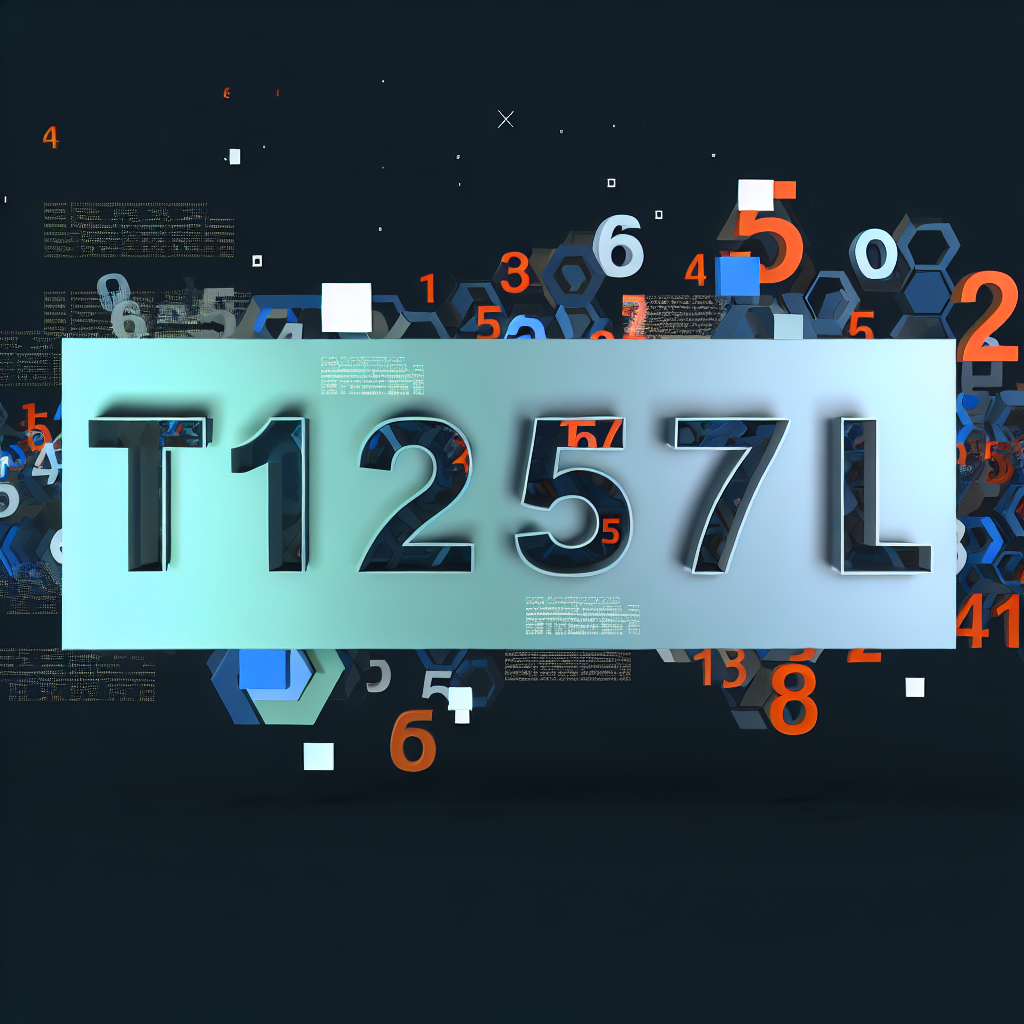
Understanding tax codes is crucial for HR professionals as they play an important role in payroll processing and employee financial management. One key tax code that appears regularly in the UK is Tax Code 1257L. As we delve into the significance of this code, its current trends, and its advantages, it is essential to empower employers and employees alike with this knowledge for better financial outcomes.
What is Tax Code 1257L?
Tax Code 1257L is commonly assigned to individuals with a single job or pension and who qualify for the standard tax-free Personal Allowance. Specifically, this code allows employees to earn up to £12,570 without incurring any income tax liability for the tax year 2023/24 [1][2][3].
Significance of Tax Code 1257L
The significance of tax code 1257L lies in its straightforward application within the taxation system. It reassures both employers and employees about their tax obligations and exemptions. As the most prevalent code for individuals with just one source of income, 1257L’s importance cannot be overstated.
Understanding the Personal Allowance
The Personal Allowance represents your tax-free income threshold, which, under tax code 1257L, is set at £12,570. This amount is crucial for taxpayers, allowing them to retain more of their earnings and fulfil personal financial commitments without the immediate burden of taxation.
Fixed Allowance Until 2028
It’s important to recognise that the Personal Allowance has been frozen as part of the Spring Budget 2023. This means that the allowance will not change until at least 2028, allowing taxpayers to plan their finances with a degree of certainty about what they will owe in tax [2].
Current Trends Associated with Tax Code 1257L
As we move through the 2023/24 tax year, tax code 1257L remains the most common designation for new pay arrangements. This suggests a consistent trend for employers when processing payroll, especially for new hires entering the workforce.
Consistency in Application
Given the freezing of the Personal Allowance, HR professionals can expect this trend to remain stable in forthcoming tax years, making it easier to administer payroll without needing to constantly adjust tax codes for eligible employees.
Fiscal Planning and Employee Communication
For HR personnel, communicating this information to employees is key. Ensuring staff members understand their tax codes and the benefits they afford can significantly enhance their financial literacy and overall job satisfaction.
Key Benefits of Tax Code 1257L
Working with tax code 1257L brings numerous advantages for both employees and employers.
- Tax-Free Personal Allowance: As mentioned, the primary benefit is the ability for individuals to earn £12,570 tax-free, enhancing financial flexibility [1][2][3].
- Simplified Tax Calculation: For payroll departments, applying the 1257L tax code simplifies calculations. Employees do not require extensive individual financial disclosures, as the code inherently delineates what their tax responsibilities are [1][3].
- Standard Treatment: The letter “L” denotes that no special circumstances affect the employee’s tax liability, which simplifies the administrative process for HR teams [1][2].
- Ease of Verification: Employees can verify their tax codes using payslips or through HMRC’s online tools, reducing the chances of miscalculation, which can lead to overpayment or underpayment [2][3].
- Minimal Adjustments Required: With no anticipated changes to the Personal Allowance until 2028, fewer adjustments to tax codes are expected, reducing administrative workload for HR departments [2].
Best Practices for HR Professionals in Managing Tax Code 1257L
HR professionals can take several practical steps to effectively incorporate tax code 1257L within their payroll processes.
Educate Employees
Facilitating workshops or informational sessions can considerably enhance employees’ understanding of tax codes and tax liabilities. Providing resources that clarify how 1257L affects their pay will promote financial awareness.
Utilise Technology
Employing software that automatically incorporates tax code changes and personal allowance updates can streamline payroll processes. Tools like HMRC’s Basic PAYE Tools offer real-time calculations, ensuring accuracy and compliance.
Regular Audits and Checks
Conducting regular audits of employee records, including tax codes and pay scales, can help catch any discrepancies early. This proactive approach helps in maintaining trust between employees and HR departments.
Conclusion
Tax code 1257L is not just a numerical designation; it is an integral part of the UK’s tax system that signals eligibility for a personal allowance of £12,570 without income tax obligations. Its relevance and application are vital for effective payroll management in workplaces across the nation.
Understanding this code equips HR professionals with the insights necessary to support their employees better. As the tax landscape evolves, remaining informed about tax codes such as 1257L will help ensure employees are adequately educated about their financial standings, fostering a more engaged workforce.
References
- RIFT Tax Refunds: Understanding what tax code 1257L means
- Unicorn Accountants: Tax Code 1257L – What Does It Mean?
- GOV.UK: What your tax code means
Vadim Kouznetsov is a distinguished entrepreneur and the visionary founder and CEO of JobXDubai.com, the UAE’s rapidly expanding job board. Renowned for his expertise in bridging the gap between job seekers and employment opportunities, Vadim has become a leading authority in the recruitment and job market of Dubai.
